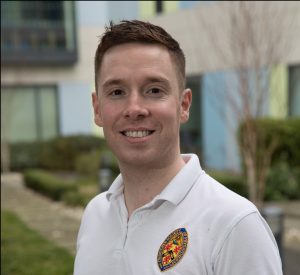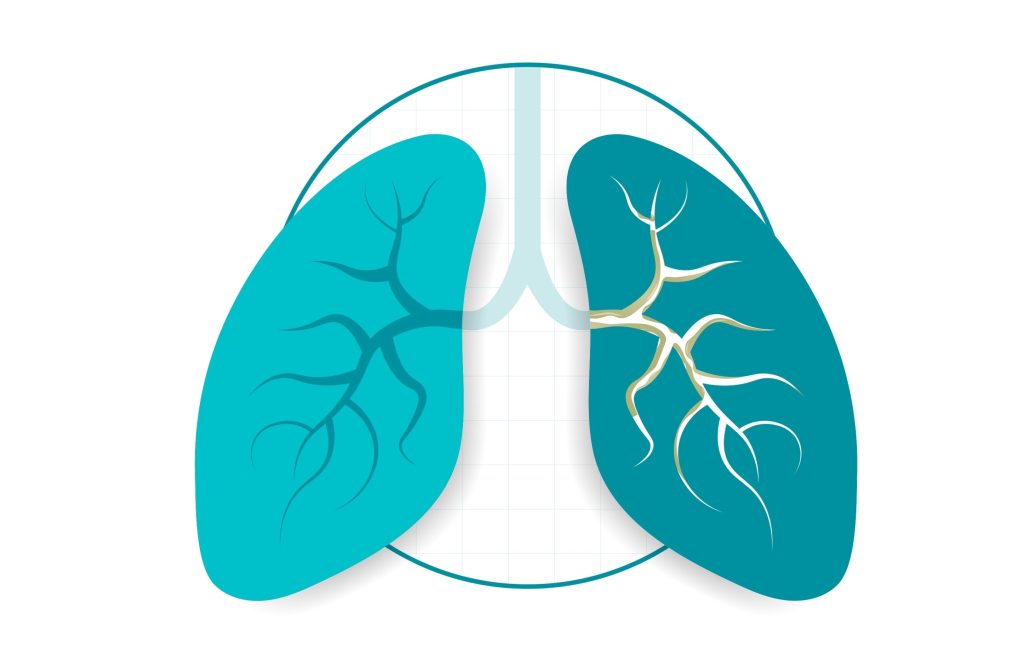
Hello. My name is Paul and I have been a physiotherapist specialising in respiratory medicine for over 9 years. I am particularly passionate about working with patients with bronchiectasis.
I’ve listened to my patients and other people living with bronchiectasis in the UK. Many voiced the unmet need for research in the non-pharmacological management of bronchiectasis, specifically around airway clearance techniques.
I want to improve patients experience and outcomes in bronchiectasis, to optimise their self-management strategies for airway clearance techniques – the cornerstone treatment for bronchiectasis.
Bronchiectasis
Bronchiectasis is a long-term lung condition with permanent widening of the airways leading to persistent cough and mucus retention which then leads to chest infections. Bronchiectasis affects over 300,000 people in the UK.

Airway clearance techniques are ways to aid coughing to clear mucus from the lungs. Research shows patients with bronchiectasis who do not perform any airway clearance techniques have worse health outcomes including more chest infections, than those who do perform one.
However, there are many types of airway clearance techniques with little evidence to say which one is best for patients. The best technique may be the one that the patient commits to and uses most regularly.
Why shared decision making is key
National bronchiectasis guidelines state patient preference should be considered when choosing airway clearance techniques but provide no indication how this should be performed. My hypothesis is that shared decision making will play a key role.
This project will be the first co-produced (with patients, physiotherapists and national charity leads) shared decision-making intervention for patients with bronchiectasis. The findings from this research will be essential in ensuring patients are actively involved in deciding their physiotherapy treatment for bronchiectasis.
This has the potential to improve adherence to airway clearance techniques, quality of life and long-term health for patients with bronchiectasis.
Why this research is important
There are three key elements to why this research is so important:
Listening to Patient Voices
A survey by the Asthma and Lung UK (the lead UK Respiratory Charity) patient and public involvement team, showed 100% of patients with bronchiectasis (n=100) felt it was “extremely important” or “very important” to be involved in making decisions about their care.
They also found that 92% of patients with bronchiectasis “strongly agreed” or “agreed” they had the skills and knowledge to be involved in making decisions about their care.
Improving adherence to treatment
Consensus bronchiectasis guidelines state patient preference should be considered when choosing airway clearance techniques but provide no indication how this should be performed.
Significant external prioritisation
My fellowship project aligns with the Chartered Society of Physiotherapy (CSP) and James Lind Alliance’s published “Top 10 Priorities” for research in physiotherapy.
Additionally, this project aligns with the National Institute of Health and Care Excellence (NICE) published guidance on Shared Decision Making and NHS Long-Term Plan priority theme – to have personalised care as “business as usual”.
Shared Decision Making is highlighted as a method to facilitate this.
National and international recognition
Over the past 5 years, I have shown consistent research commitment obtaining two national awards on the (NIHR) clinical academic pathway.
These include the HEE/NIHR Internship and the HEE/NIHR Pre-Doctoral Clinical Academic Fellowship (PCAF) where I completed an MSc in Public Health and Health Services Research.
My passion in this field has been recognised at an international level as evidenced by my invitation as speaker and faculty at the World Bronchiectasis Conference in Prague in June 2022 – a Global webinar on Airway Clearance Techniques in Bronchiectasis hosted by Trudell Medical International – and again as a speaker at the British Thoracic Society in May 2022.
I have developed a range of clinical and academic networks and am the long-term conditions champion for the Association for Chartered Physiotherapists in Respiratory Care (ACPRC) for the UK.
This role will support recruitment and engagement with key stakeholder during my fellowship as well as communication and dissemination of outputs.
I have an established publication record for my current level of academic training including high-impact journals such at the European Respiratory Journal.
This doctoral clinical-academic fellowship will be funded by HEE through the NIHR Integrated Clinical Academic (ICA) Training Scheme
I successfully obtained funding for Patient and Public Involvement in preparation for this fellowship through the NIHR Research Design Service North East & North Cumbria (RDS NENC). This network was one of many who supported me in applying for this award.
My research and expertise in airway clearance has been presented to patients, clinicians and the academic community at the World Bronchiectasis Conference in Prague June 2022. This trip was supported by the Newcastle Hospital Charity, for which I am very grateful.
Doctoral Clinical and Practitioner Academic Fellowship (DCAF)
Formerly the Clinical Doctoral Research Fellowship (CDRF)
The DCAF scheme funds registered healthcare professionals to undertake a PhD by research and, concurrently, to undertake further professional development and practice.
The funding covers salary costs, PhD tuition fees, the costs of an appropriate research project, and the costs of tailored clinical and academic training programmes.
The Fellowship is a three year award (up to six years part time) with approximately 80% spent working academically and the remaining 20% of fellowship hours devoted to practice and professional development.
You can find out more about DCAF and other HEE-NIHR Integrated Clinical and Practitioner Academic Programmes on the NIHR website
